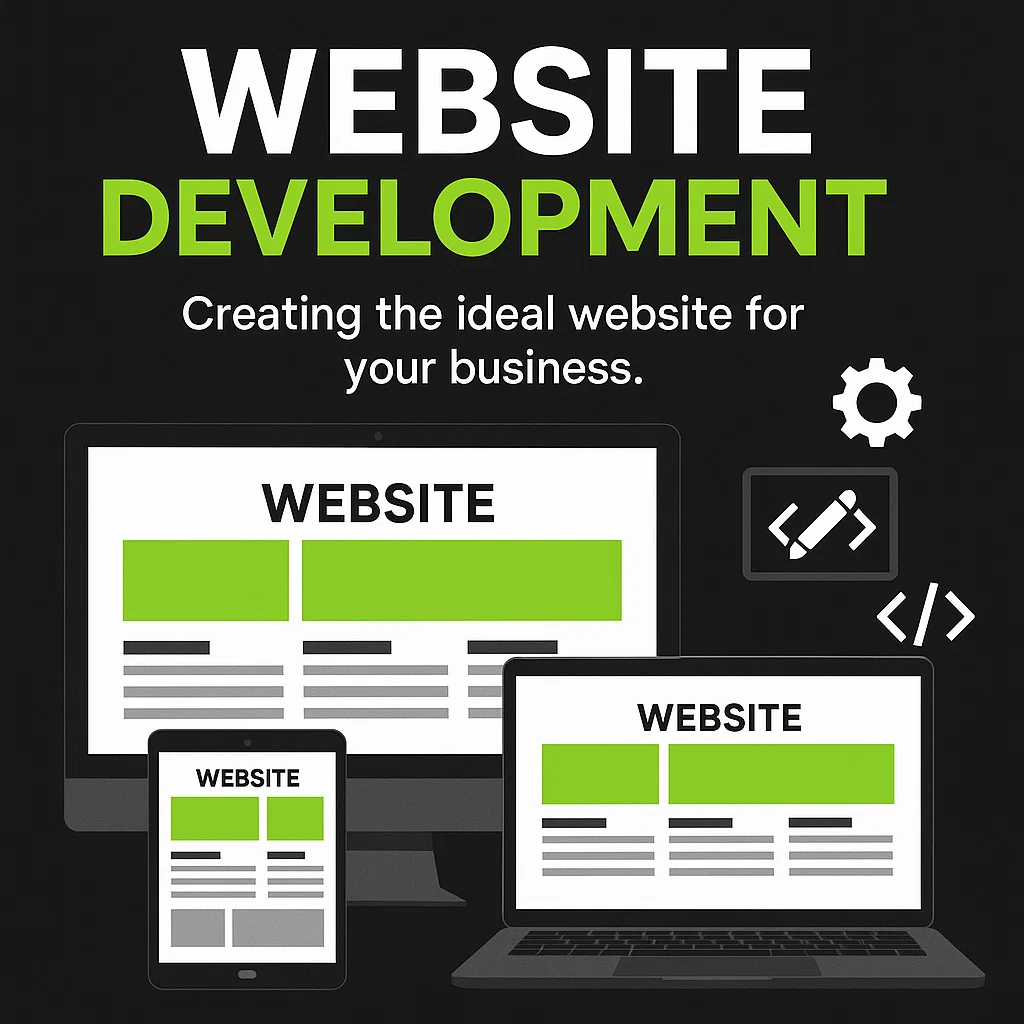User experience has evolved from a nice-to-have feature to the primary differentiator that determines whether websites succeed or fail in today’s competitive digital landscape. Users now expect websites to be not just functional, but intuitive, fast, and genuinely helpful in achieving their goals. This shift has transformed website development from a technical exercise into a strategic discipline that requires a deep understanding of human behavior, business objectives, and technological possibilities.
The stakes are higher than ever: research shows that 88% of online consumers are less likely to return to a website after a bad experience, while a one-second delay in page loading can reduce conversions by 7%. These statistics aren’t just numbers – they represent real business impact that makes user experience optimization a critical investment rather than an optional enhancement.
The Psychology of Exceptional User Experience
Understanding User Mental Models
Effective user experience design begins with understanding how users think, process information, and make decisions when interacting with websites. Users approach every website with existing mental models – expectations about how things should work based on their previous experiences with similar sites and applications.
Professional website development services recognize that fighting against these mental models creates friction, while aligning with them creates intuitive experiences that feel natural and effortless. This might mean placing navigation elements where users expect to find them, using familiar interaction patterns for common actions, or organizing information in ways that match users’ existing understanding of similar content.
The goal isn’t to be different for the sake of uniqueness, but to be different in ways that provide genuine value while maintaining familiar interaction patterns that reduce cognitive load and learning curves.
Cognitive Load Management
Every element on a webpage requires mental processing power from users. Colors, fonts, layouts, navigation options, content hierarchies, and interactive elements all compete for attention and contribute to cognitive load. Effective user experience design manages this cognitive load strategically, ensuring that mental resources are focused on achieving user goals rather than figuring out how the website works.
This involves careful information architecture that presents options logically, visual design that guides attention effectively, and interaction design that minimizes the mental effort required to complete desired actions. The best user experiences feel effortless because they’ve been designed to eliminate unnecessary complexity while maintaining sophisticated functionality.
Performance Optimization as UX Foundation
Speed as a User Experience Factor
Website performance isn’t just a technical consideration – it’s a fundamental component of user experience that affects everything from first impressions to task completion rates. Slow-loading websites create frustration that colors users’ perceptions of content quality, brand credibility, and overall value proposition.
Effective performance optimization requires strategic approaches that go beyond simple image compression or caching implementations. This includes code optimization that prioritizes critical rendering paths, database query optimization that minimizes server response times, and content delivery strategies that ensure fast loading regardless of user location or device capabilities.
The key is treating performance optimization as an integral part of user experience design rather than a technical afterthought that gets addressed after other development work is complete.
Mobile Performance Considerations
Mobile users often deal with variable network conditions, limited processing power, and different usage contexts that make performance optimization even more critical. Mobile-first development approaches ensure that websites perform well under these constraints while providing rich functionality when network and device conditions allow.
This requires a sophisticated understanding of progressive enhancement techniques, intelligent resource loading strategies, and mobile-specific optimization approaches that balance functionality with performance constraints.
Responsive Design Beyond Device Compatibility
Adaptive User Interfaces
True responsive design extends beyond simply making websites work on different screen sizes to creating interfaces that adapt intelligently to user context, device capabilities, and usage scenarios. This might include simplified navigation for mobile users, enhanced functionality for desktop users with larger screens, or contextual feature presentation based on detected user behavior patterns.
Adaptive interfaces recognize that users interact with websites differently depending on their device, location, time constraints, and goals. A restaurant website might emphasize location and contact information for mobile users likely looking for directions, while providing detailed menu information and reservation systems for desktop users planning visits.
Context-Aware Functionality
Advanced responsive design implementations consider not just screen size but user context to provide relevant functionality and information. This includes time-based content adjustments, location-aware features, and behavioral adaptations that improve relevance and reduce friction in achieving user goals.
Context awareness enables websites to anticipate user needs and present appropriate options without requiring users to navigate through irrelevant information or functionality.
Information Architecture and Navigation Design
Intuitive Information Organization
The way information is organized and presented dramatically affects user ability to find what they need and complete desired actions. Effective information architecture reflects user mental models while supporting business objectives through strategic content organization and presentation.
This involves careful analysis of user goals, content relationships, and task flows to create navigation structures that feel logical and efficient. The best information architectures become invisible to users because they align so well with expected organization patterns.
Progressive Disclosure Techniques
Complex websites often need to present substantial amounts of information and functionality without overwhelming users. Progressive disclosure techniques reveal information and options incrementally, allowing users to access deeper functionality when needed while maintaining simple, approachable initial interfaces.
This might include expandable content sections, contextual help systems, or interface complexity that scales based on user experience levels and demonstrated needs.
Interactive Elements and Microinteractions
Feedback and Affordance Design
Every interactive element should provide clear visual cues about its functionality and immediate feedback about user actions. This includes hover effects that indicate clickable elements, loading indicators that show system status, and confirmation messages that verify completed actions.
These microinteractions might seem minor individually, but they collectively create the sense of responsiveness and polish that users associate with high-quality experiences. They also reduce uncertainty and anxiety by keeping users informed about system status and action outcomes.
Error Prevention and Recovery
Excellent user experience design anticipates potential user errors and implements prevention strategies while providing clear, helpful recovery options when errors do occur. This includes input validation that prevents common mistakes, clear error messages that explain problems and solutions, and forgiving interfaces that minimize the impact of user mistakes.
Error handling becomes particularly important for complex forms, e-commerce checkout processes, and other high-stakes interactions where user mistakes can result in abandonment or frustration.
Accessibility and Inclusive Design
Universal Design Principles
Accessibility isn’t just about compliance with technical standards – it’s about creating websites that work well for users with diverse abilities, technologies, and interaction preferences. Universal design principles benefit all users by creating clearer, more predictable, and more robust user experiences.
This includes proper semantic markup that works with assistive technologies, sufficient color contrast for visibility in various conditions, and keyboard navigation support that enables efficient interaction regardless of input method preferences.
Inclusive User Experience Strategy
Inclusive design considers the full spectrum of user diversity, including language preferences, cultural contexts, technical literacy levels, and varying device capabilities. Professional web development services implement inclusive design strategies that create positive experiences for broad user populations without compromising sophistication or functionality.
Content Strategy and User Experience
Content That Serves User Goals
Strategy plays a crucial role in user experience by ensuring that information is presented in ways that support user goals while advancing business objectives. This includes strategic content organization, tone and voice consistency, and information presentation that matches user scanning and reading patterns.
An effective content strategy recognizes that users rarely read websites linearly, instead scanning for relevant information and focusing attention selectively. Content organization and presentation should support these natural reading patterns while guiding users toward desired actions.
Visual Content Integration
Images, videos, and other visual elements should enhance rather than distract from user goal achievement. This includes strategic use of visual content to explain complex concepts, reduce cognitive load, and create emotional connections that support user engagement and trust building.
Visual content strategy also considers loading performance implications, ensuring that enhanced visual experiences don’t compromise website speed and responsiveness.
Personalization and Dynamic Experiences
User-Centric Customization
Advanced websites can adapt content, functionality, and presentation based on user behavior, preferences, and demonstrated needs. This personalization enhances user experience by reducing irrelevant information and highlighting content that’s most likely to be valuable for individual users.
Effective personalization strategies balance customization benefits with privacy considerations, implementing personalization that feels helpful rather than intrusive while respecting user data preferences and control.
Behavioral Adaptation
Sophisticated user experience design can learn from user interactions and adapt over time to better serve individual and aggregate user needs. This might include interface adjustments based on usage patterns, content recommendations based on browsing behavior, or functionality emphasis based on demonstrated user preferences.
Technical Implementation Excellence
Clean Code and Architecture
User experience quality depends heavily on technical implementation quality that may not be immediately visible to users but affects everything from loading speed to feature reliability. Clean, well-organized code enables faster development, easier maintenance, and more reliable functionality that supports consistent user experiences.
When working with professional web development services, businesses should prioritize partners who understand that technical excellence and user experience quality are inseparable aspects of successful website development.
Testing and Quality Assurance
Comprehensive testing strategies ensure that user experiences work consistently across different devices, browsers, and usage scenarios. This includes functional testing that verifies feature reliability, usability testing that validates design decisions with real users, and performance testing that ensures consistent experience quality under various conditions.
Strategic UX Partnership
Expertise Integration
Creating exceptional user experiences requires expertise that spans user research, interaction design, visual design, technical implementation, and strategic business understanding. Companies like Devsinc combine these diverse expertise areas to create websites that excel in user experience while supporting business objectives effectively.
The most successful user experience projects result from partnerships that integrate technical capabilities with deep understanding of user behavior and business strategy, ensuring that UX improvements create measurable value for both users and businesses.
Continuous Optimization
User experience optimization isn’t a one-time project but an ongoing process of measurement, analysis, and refinement based on real user behavior and changing business requirements. This requires development partnerships that support continuous improvement rather than treating website launch as project completion.
Measuring UX Success
Meaningful Metrics
User experience improvements should be measured through metrics that reflect genuine user satisfaction and business value rather than vanity metrics that don’t correlate with success. This includes task completion rates, user satisfaction scores, conversion metrics, and behavioral indicators that demonstrate improved user experience quality.
Data-Driven Optimization
Successful user experience enhancement relies on data analysis that identifies improvement opportunities and validates design decisions through real user behavior rather than assumptions or preferences.
Conclusion
Website development services that prioritize user experience create competitive advantages that extend far beyond aesthetic appeal to include improved user satisfaction, higher conversion rates, and stronger brand perception. The investment in user experience optimization generates returns through improved business results and customer loyalty that compound over time.
Success requires treating user experience as a strategic priority throughout the development process rather than an afterthought, ensuring that technical implementation serves user goals while supporting business objectives. When approached strategically with appropriate expertise, user experience enhancement becomes one of the most valuable investments businesses can make in their digital presence.
Read Also: Why Organic SEO Services Provide Long-Term Growth vs Paid Advertising




